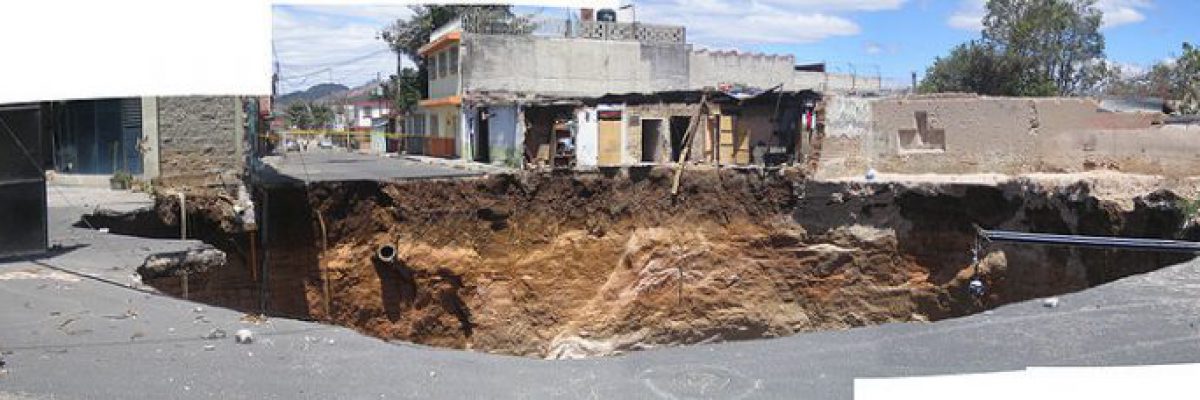In recent years, there have been numerous cases of sinkholes in which the land has figuratively opened its mouth and swallowed roads, vehicles, buildings, animals and people. Such cases are common in Florida, Mexico, Bolivia, Argentina and the Dead Sea area in Israel and Jordan.
Sinkholes are formed as a result of a combination of two main factors – the type of rock and soil in the area together with a climatic factor – increase of precipitation, its intensity and concentration in one season of the year.
Soil is built of layers of soft and hard rock. Hard rock can withstand weathering and erosion processes caused by fresh water. Soft rock crumbles easily, dissolves in water and can drift in the subsoil. When a layer of soft rock lies beneath a layer of hard rock, it tends to drift and thus creates cavities deep in the ground. These spaces are not visible from the ground, they can reach tens of meters depths and expand over time.
When the cavities becomes too large, the hard rock above it collapses bringing down everything over it: buildings, infrastructure, vehicles and people. The danger is great, the collapse can be very deep, and sinkholes often have reservoirs of fresh water or mud at the bottom so that structures sink in.
Today, it is almost impossible to estimate where or when sinkholes will be created. Once created, there is no way to deal with them and the area is abandoned. In Florida’s environment, where soft rock combined with unique geological structures and large quantities of fresh water are abundant, the problem of sinkholes is increasing. The Dead Sea area in Israel has suffered in recent years from the sinkhole phenomenon due to the decline in sea water levels and the penetration of fresh water from the Judean Hills springs. The sweet water melts away the salt layer that makes up the soil and creates cavities in it. The sinkholes have caused the collapse of roads, infrastructure, buildings, tree plantations and more.
https://youtu.be/aRe0ktqujLQ






